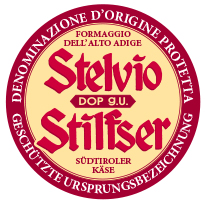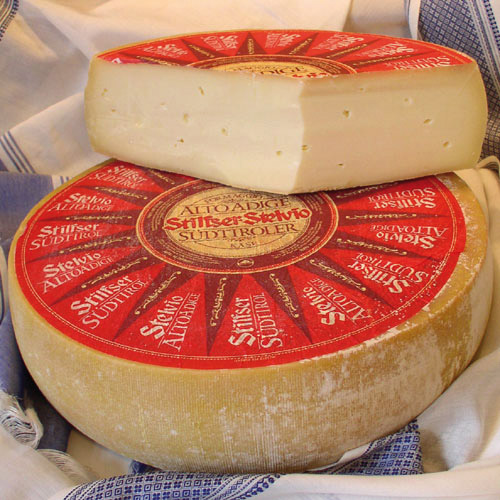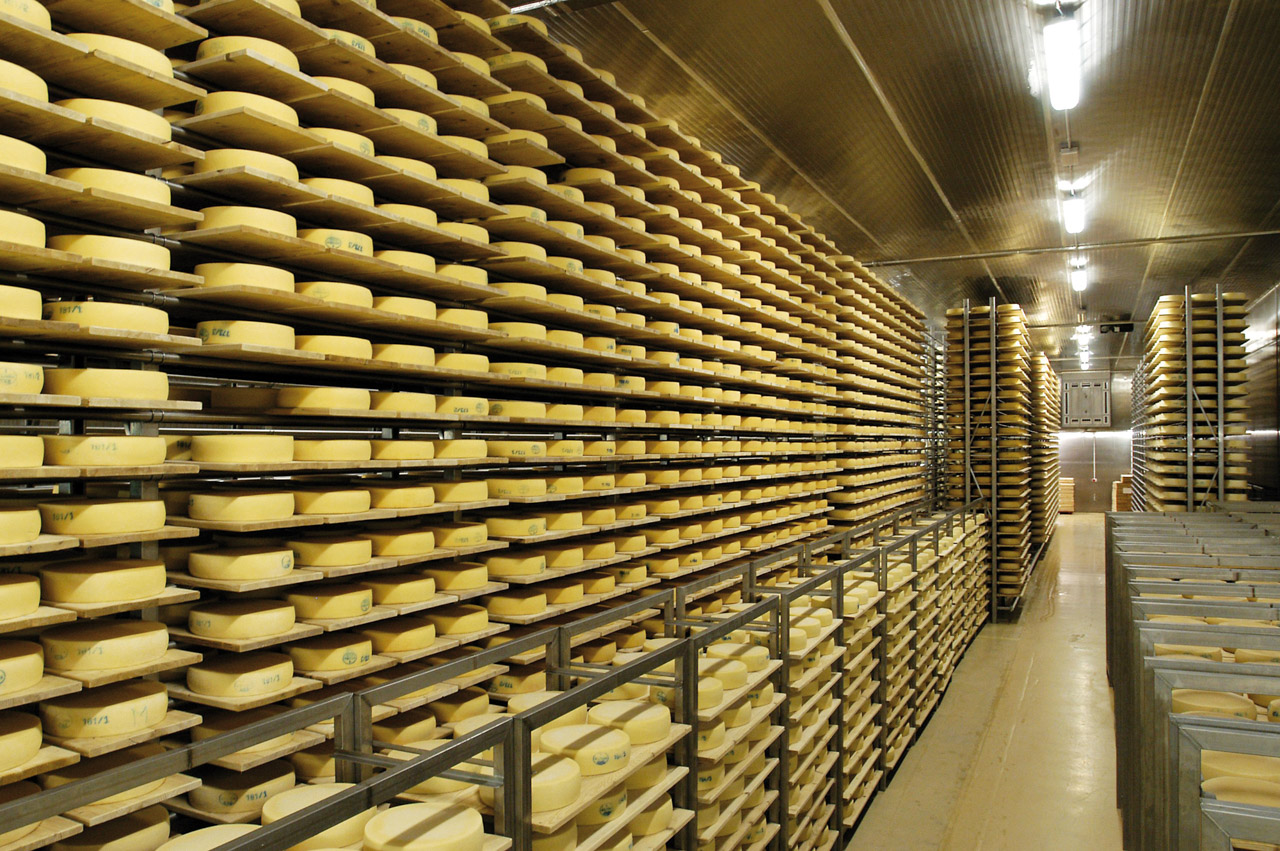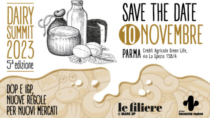Description
Stelvio PDO or Stilfser g.U. is a firm cheese produced with cow’s milk obtained from cows fed mainly with forage from the production area.
Production Area
The production area of Stelvio PDO or Stilfser g.U. is within the numerous municipalities in the autonomous Province of Bolzano, some of which are inside the Stelvio National Park.
Production Method
The milk, which may be lightly skimmed, must be processed within 48 hours of milking, and is inoculated with a milk starter culture (probiotics). After 50-60 minutes (maximum 85 minutes) calf rennet or another type of rennet, including vegetarian, is added. The curd is obtained at 32-33 °C and after about 20-27 minutes of curdling it is broken into grains the size of corn kernels. The mass is then agitated for 8-10 minutes, drained of part of the whey and heated. Processing, from the addition of the rennet to the mass being poured onto the table or into a vat, takes around 80-90 minutes. The curd is extracted, shaped and put into cylindrical moulds where it is pressed, a process that lasts from 30 minutes to two hours. Once pressed, the wheels are left to rest in air-conditioned environments until they reach the desired level of acidification. The wheels can be cooled and hardened by immersing them in cold water for one-three hours. Only brining is used to salt the cheese. The wheels are placed on wooden tables to ripen for at least 60 days, and during this period the wheels are turned and washed with a saline solution about twice a week.
Appearance and Flavour
Stelvio PDO or Stilfser g.U. has a cylindrical shape with flat or almost flat surfaces and a straight or concave heel. The weight varies from 8 to 10 kg and the rind has a typical yellowish-orange or yellowish-brown colour. The cheese is firm, soft and springy and has a strong and spicy aroma with an intense and decisive taste. Shapes other than cylindrical are permitted for cheeses destined exclusively for pre-packing (slicing, dicing, grating).
History
The origins of Stelvio PDO or Stilfser g.U. date back to the 13th century, as evidenced by numerous historical documents. In fact, it has been proved that this cheese was already a staple element in the diet of the local population at that time. Property registers show that this cheese was used as a means of exchange for the payment of tributes to landowners, confirming the importance of its production. The use of the name Stelvio or Stilfser is found in several documents from the Stilf dairy dating back to the beginning of the 20th century.
Gastronomy
Stelvio PDO or Stilfser g.U. should be kept in its original packaging, inside a sealed glass or plastic container, in the least cold compartment of the refrigerator. This cheese is delicious melted over polenta, especially the unrefined polenta typical of mountain cuisine. It is also ideal served with many typical dishes in southern Tyrolean cuisine: from cereal soups to speck and cheese boards. It is usually paired with Alto Adige PDO Pinot Nero and Alto Adige PDO Schiava, while Alto Adige PDO Lagrein, a native grape variety, is recommended for the maturer cheese.
Marketing
The product is marketed as Stelvio PDO or Stilfser g.U. It is sold year-round in whole wheels, large pieces, or in pre-packed slices. The cheese must bear a label with the designation and product logo.
Distinctive Features
A specific native microflora is added to Stelvio PDO or Stilfser g.U during the first three weeks of ripening. This microflora is responsible for the distinctive external layer that forms on the rind and gives the cheese its typical colour, which ranges from yellowish-orange to orangey-brown, and its unusual intense aroma.


















